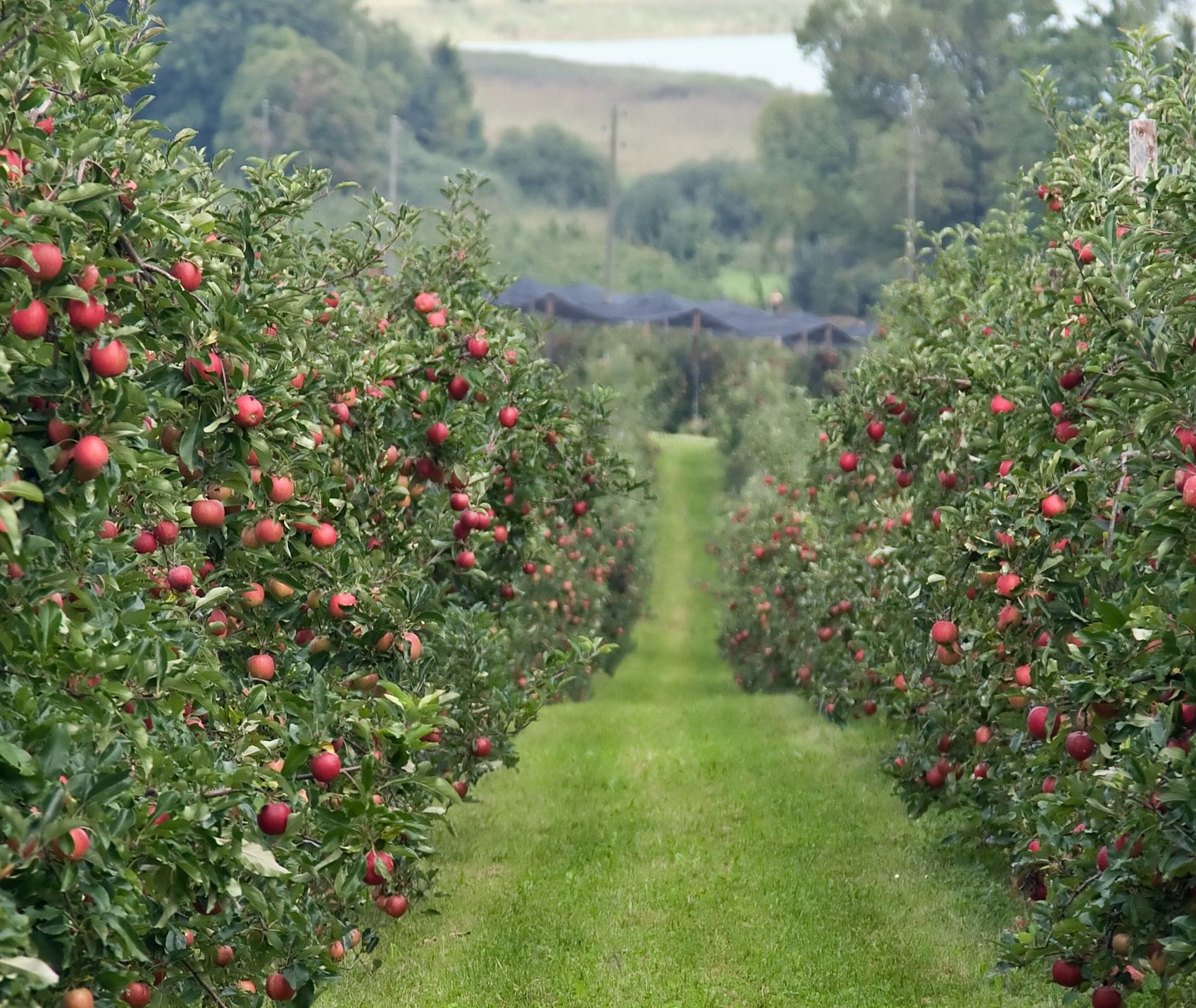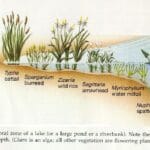Orchards: cultivated ecosystems producing a diverse bounty of fruits, fostering biodiversity, and enriching our landscapes. Imagine a place where the air is sweet with the scent of ripening fruit, a haven for buzzing bees and chirping birds. This isn’t a dream, it’s the potential of an orchard. From ancient origins to modern cultivation, let’s explore the fascinating history and evolving practices of fruit orchard management and discover how you can cultivate your own piece of paradise.
Discovering the World of Orchards
What exactly is an orchard? It’s more than just a collection of fruit trees. It’s a carefully designed ecosystem, a vibrant tapestry of life where fruit-bearing trees and shrubs flourish. These cultivated spaces come in all shapes and sizes, from small family plots to vast commercial operations, and they offer a wealth of benefits far beyond the delicious fruit they provide.
Types of Orchards: A Diverse Landscape
Orchards are like fingerprints—no two are exactly alike. They vary in size, purpose, and the types of fruit they offer. Exploring the different types can help you envision the possibilities for your own fruit-growing endeavor.
Commercial Orchards: These large-scale operations are the backbone of the fruit industry, supplying supermarkets with the apples, oranges, and bananas we enjoy year-round. Efficiency and high yields are key, often utilizing modern technology to maximize production.
Community Orchards: These collaborative green spaces offer a unique blend of community engagement and environmental stewardship. They provide a place for people to connect with nature, learn about fruit growing, and share the harvest.
Home Orchards: Whether you have a sprawling backyard or a sunny balcony, a home orchard can bring immense satisfaction. It’s the joy of nurturing life, the taste of sun-warmed fruit picked straight from the tree, and a tangible connection to the natural world. Discover the convenience of using point markers to organize and label your trees, enhancing your orchard’s efficiency and beauty.
A Journey Through Time: The History of Orchards
Orchards have a rich history intertwined with human civilization. From the ancient Romans planting apple trees in Britain to the modern-day cultivation of exotic fruits, orchards have evolved alongside our understanding of agriculture and our desire to cultivate nature’s bounty. Further research into the specific history of orchards in your region can offer fascinating insights into local traditions and the evolution of fruit growing.
The Bounty of the Orchard: A Fruitful Exploration
More than just fruit: Orchards offer ecological benefits, community engagement opportunities, and a connection to nature’s rhythms. What kind of fruit can you expect to find nestled among the branches? The answer is as diverse as the climates in which orchards thrive.
A Taste of the Seasons: Fruit Variety in Orchards
Imagine strolling through a temperate orchard in autumn. Crisp apples, juicy pears, and sweet plums hang heavy on the branches. Perhaps you’ll find a hidden quince, ready to be transformed into a fragrant jelly. In warmer climates, the orchard might be bursting with tropical delights like mangoes, papayas, and vibrant citrus fruits. From the familiar comfort of apples to the exotic allure of mangoes, there’s a fruit to tempt every palate.
| Fruit Type | General Climate | Notes |
|---|---|---|
| Apples | Temperate | Many varieties, from sweet to tart |
| Pears | Temperate | Often used in baking |
| Peaches | Temperate | Fuzzy skin, juicy flesh |
| Plums | Temperate | Variety of colors and flavors |
| Cherries | Temperate | Sweet or tart |
| Oranges | Subtropical/Tropical | Rich in Vitamin C |
| Lemons | Subtropical/Tropical | Commonly used for juice and zest |
| Grapefruit | Subtropical/Tropical | Tangy and slightly bitter |
| Bananas | Tropical | Convenient and nutritious |
| Mangoes | Tropical | Rich, golden flesh, sweet aroma |
| Dates | Tropical/Desert | Chewy, caramel-like flavor |
| Figs | Tropical/Subtropical | Delicate skin, jammy interior |
| Olives | Mediterranean | Used for oil and as a table fruit |
| Almonds | Mediterranean/Temperate | Nutrient-rich nut |
| Walnuts | Temperate | Another healthful nut choice |
| Pecans | Temperate | Popular in desserts and snacks |
Beyond the Fruit: Ecological and Community Benefits
Orchards are more than just fruit factories. They are vital ecosystems supporting biodiversity by providing food and shelter for pollinators like bees and butterflies, as well as birds and other small animals. Community orchards, in particular, offer opportunities for social interaction, education, and access to fresh, locally grown fruit. They strengthen community bonds and promote a shared appreciation for nature.
Cultivating Your Own Eden: A Step-by-Step Guide
Plan your perfect orchard: Learn expert tips on selecting fruit trees, designing your layout, and ensuring a bountiful harvest. Ready to embark on your own orchard adventure? Here’s a roadmap to guide you:
Step 1: Preparing the Ground
Healthy soil is the foundation of a thriving orchard. Test your soil’s pH and drainage, as different fruits have different preferences. Amending the soil with compost or other organic matter creates a nutrient-rich environment for your trees to flourish.
Step 2: Selecting Your Trees
Consider your local climate and choose fruit trees that are well-suited to the conditions. Think about the space you have available; dwarf varieties are excellent for smaller gardens. Don’t forget to select fruits you love!
Step 3: Designing Your Layout
Proper spacing is crucial for air circulation and sunlight penetration, which helps prevent diseases. Plan your layout carefully, considering the mature size of each tree and its sunlight requirements. Resources like Fruit Expert UK can provide valuable guidance on orchard planning and design.
Step 4: Nurturing Your Orchard
Fruit trees need regular care and attention. Watering, fertilizing, and pruning are essential for healthy growth and abundant fruit production. Integrated pest management, which focuses on prevention rather than reaction, can help keep your orchard thriving.
The Future of Orchards: Embracing Sustainability
Ongoing research constantly reveals new insights into orchard management, pest control, and fruit tree varieties. While we don’t have all the answers today, the journey of discovery is part of the joy of orcharding. Embrace the learning process, stay curious, and enjoy the ever-evolving world of fruit growing. It’s important to note that our understanding of orchard management is always growing. Research is constantly being conducted to improve fruit quality, disease resistance, and yields. This suggests that even what we consider common orchard fruits today may evolve over time.
By understanding the different types of orchards, employing sustainable practices, and appreciating the multifaceted benefits they offer, we can ensure that these vibrant ecosystems continue to thrive, providing us with delicious fruit and a deeper connection to the natural world for generations to come. The decline of traditional orchards highlights the importance of supporting local growers and community initiatives to preserve these valuable resources and the biodiversity they represent. The future of fruit growing lies in embracing sustainable practices, fostering community engagement, and continuing to explore the fascinating world of orchards.
- Discover Long Black Pepper: Flavor & Health Benefits - April 25, 2025
- Shocking Twists: The Grownup Review: Unreliable Narration - April 25, 2025
- A Quiet Place Book vs Movie: A Deep Dive - April 25, 2025
















